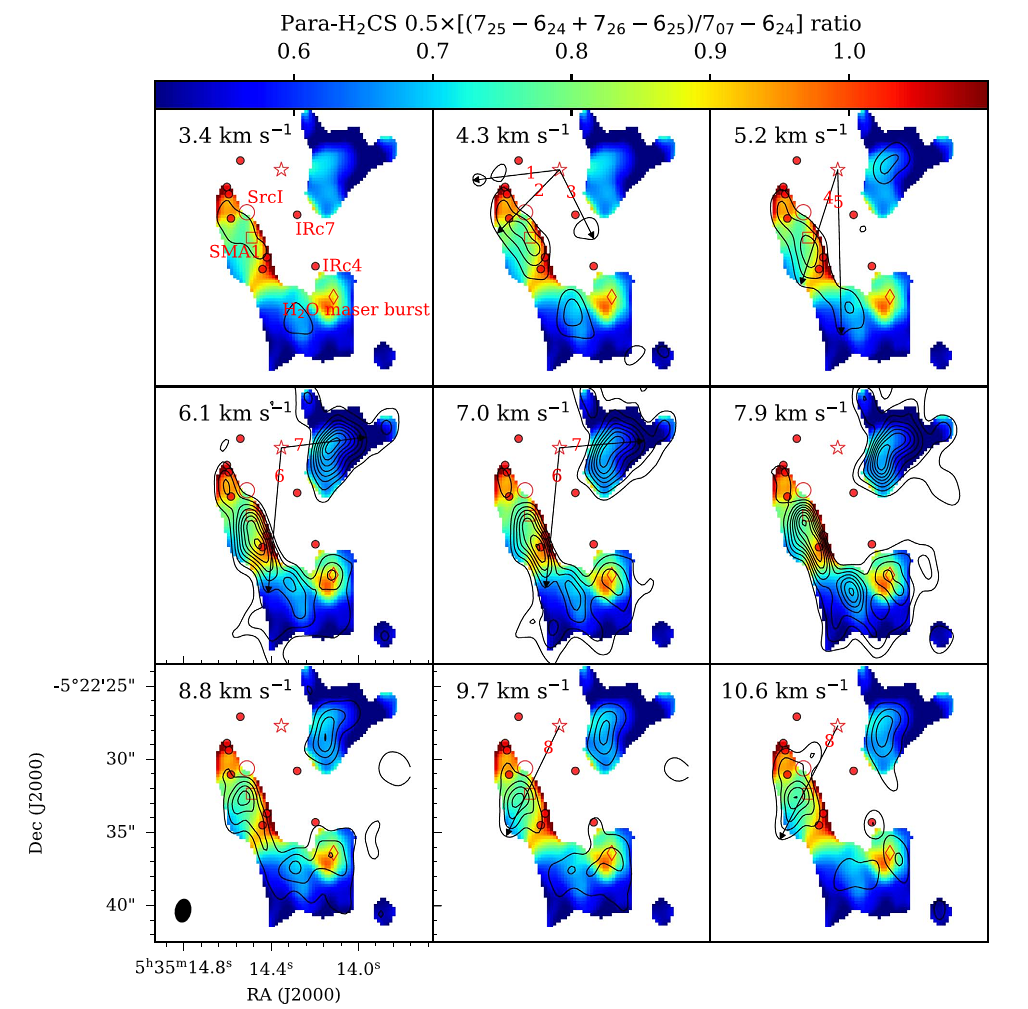

Evidence for Dense Gas heated by the Explosion in Orion KL
Orion Kleinmann-Low (Orion KL) nebula is the nearest massive star-forming region. An explosion occurred in this nebula about 550 years ago. The explosion not only accelerated several young stars, but also produced spectacular high velocity outflows. However, whether the dense gas in Orion KL is mainly heated by this explosion is under debate.

Color images represent the observed flux ratios of different transitions of H2CS; the higher ratios correspond to higher gas kinetic temperatures; the black contours represent the velocity integrated intensities of different velocities; the star represents the explosive center.
Contact: LI Dalei
Xinjiang Astronomical Observatory, Chinese Academy of Sciences
Email: lidalei@xao.ac.cn
Article link: https://iopscience.iop.org/article/10.3847/1538-4357/abae60
Attachment Download: